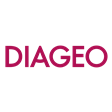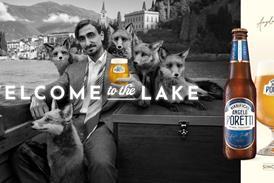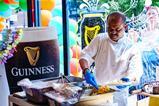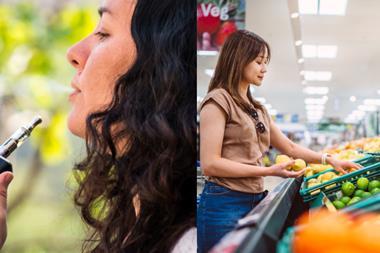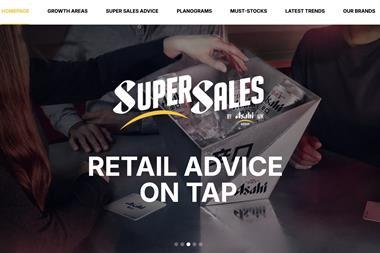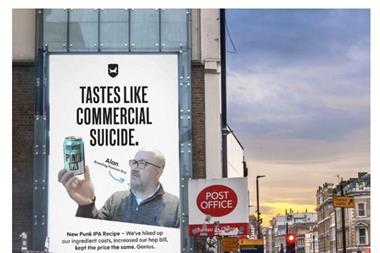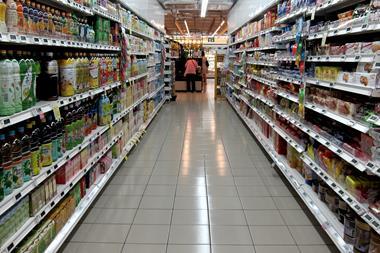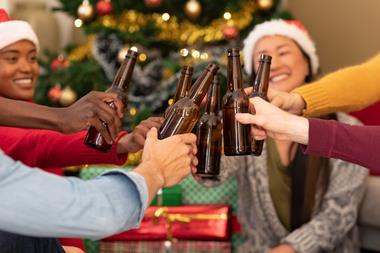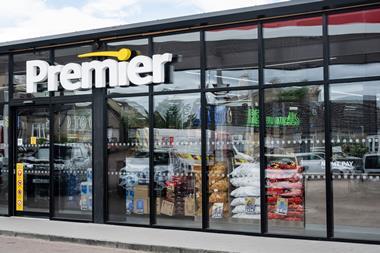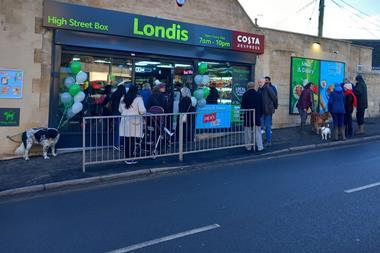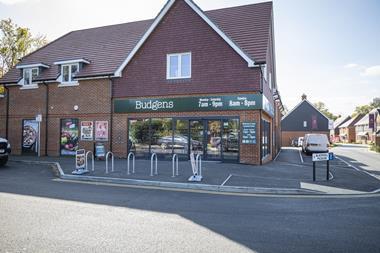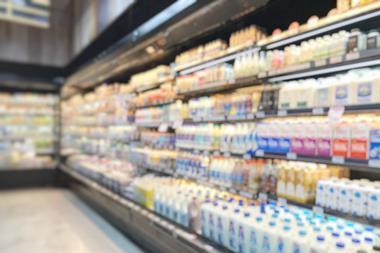While there is plenty of NPD still ongoing in the UK spirits market, in times of financial stress, consumers tend to revert to brands they know and trust. Here, Diageo explains why major spirits brands are the best option for c-stores looking to maximise sales.
With new and exciting brands continually entering the drinks market, it can be hard to navigate the evolving category and identify what resonates best with customers.
Consumers are keen to explore new and exciting products to build their drinks repertoire and are becoming more thoughtful when it comes to their purchasing choices.
Trust and loyalty
A survey by Devries Global found that 85% of 18- to 25-year-olds said they prefer buying from familiar brands over new or non-mainstream brands1, while a recent report by IWSR pointed to the trend of ‘mainstreamisation’2 during periods of crisis such as the pandemic or during challenging financial times, with consumers tending to turn to familiar reassuring brands. This is why brands people know and trust ultimately play a huge part in a consumer’s purchasing decision. People want to know they’re investing in products they know they’ll enjoy. It is familiar territory, so in an environment where budgets are tight, it is an option they know guarantees quality and flavour.
Best performing brands
Smirnoff, the biggest vodka brand in convenience3, is worth £276m in the convenience channel, +1.1% vs YA4 – far ahead of its competitor brands. What makes it stand out from the rest? It has a long-standing reputation as a versatile spirit, easily used as part of a mixed drink, enabling consumers to create their favourite cocktails and mixed drinks at home. As a historic brand, it has built on a strong customer base, retaining existing customers as well as attracting new ones through its range of SKUs and innovation throughout the years – its heritage of being a trusted brand means it is relied upon when it comes to quality. Smirnoff also appeals to many customers because of its price point and positioning, catering to a range of budgets and occasions through 35cl bottles, price-marked packs and gift packs.

The gin category still holds the largest drinker base of all spirits in the UK with 30.6% consumer penetration5. The Gordon’s London Dry Gin (37.5% ABV) brand’s position as the No.1 gin brand6 is a testament to the strength of both the brand and the product. Gordon’s Premium Pink Gin (37.5% ABV) comes in as the second leading gin brand7. The popularity of the pink flavour trend launched from a loved and trusted brand such a Gordon’s has proven hugely successful. The brand continues to develop new flavour innovation in line with wider consumer trends to offer more choice to consumers.
Engagement and exploration
When consumers consider trialling new innovations, brands they’re accustomed to are a great starting point. Shoppers are more inclined to explore new variants and take it home if it has a recognisable label. For example, Smirnoff Raspberry Crush (37% ABV), Mango & Passionfruit Twist (37% ABV), Berry Burst (37.5% ABV) and Cherry Drop (37.5% ABV) have proven hugely popular since launch. Driven by consumers’ interest in purchasing and trying new variants from an established brand, Smirnoff flavours are currently driving its growth across convenience and are now worth £14m8, demonstrating its ability to spearhead the category by tapping into popular flavour profiles.
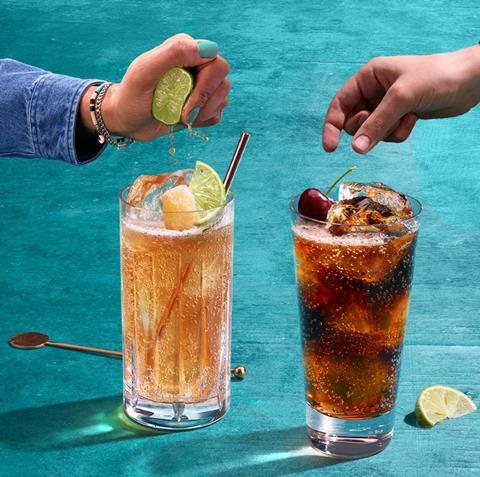
Meanwhile, aiming to help retailers tap into the growing rum category and cater for premium consumer occasions, Captain Morgan has added to its portfolio with this year’s launch of Captain Morgan Black Spiced rum-based spirit (40% ABV). With notes of vanilla, black cherry and caramel, the brand will roll out into the wider convenience channels from September.
Captain Morgan is currently the No.1 rum brand in GB9 and, last year, launched its ‘Spice On’ campaign, a new global digital first activity, celebrating ‘spice’ as the ingredient that makes Captain Morgan Original Spiced Gold delicious, as well as the power of people just being themselves and bringing their own ‘spice’ to the table.
Merchandising advice
Dependent on the layout of a store, retailers can consider signage, as well as double facings of big brands to help consumers navigate choices, making the shopping experience as seamless as possible through clear, eye-catching POS. Keeping big brands at eye level and grouping variants from the same brand together will also create real on-shelf impact. If space allows, cross-merchandising with mixers can help inspire sales and also help suggest to consumers the best ways to enjoy the drink.
Consistency
Retailers should become familiar with their customer base to understand their wants and needs. For example, consumers generally expect to see familiar products on-shelf which they can fall back on if in doubt or struggling to make a purchasing decision. Another key reason retailers should ensure their consumers’ favourite brands are available and well stocked is that, once a customer knows they can rely on a particular store when it comes to choice and availability, this can encourage repeat visits.
Case study
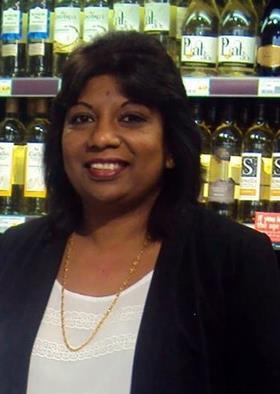
Sue Nithyanandan, owner of Costcutter in Epsom, reveals how Diageo’s support has helped her to develop her spirits selection and on-shelf presentation:
“Our store has been running for over 12 years now, and we’ve always stocked a big selection of brands. We do very well with all our brands in store and have worked with Diageo for many years – the spirits range is a big contributor towards our overall sales.
“We have a lot of support from our reps who advise on range, price point and provide guidance on key seasonal occasions such as summer and what variants to stock, as well as sharing the supporting POS. As a retailer, your time can be very stretched, so being able to lean on a key contact for support is invaluable in helping to grow sales.
“Generally, the price-marked bottles sell extremely well, particularly Smirnoff and Captain Morgan. We also find that people often come in, in search of more premium products, so it’s always important to ensure you’re catering to a range of customers. We also ensure our ranges are displayed with our customer in mind, so with clear signage, meaning they can easily see what’s on offer and search for their favourite brands with ease. Our core range, for example, is displayed prominently behind the counter with lighting. My advice to retailers would be know your client base and speak to your customers to understand what they’re looking for.”
To discover more about Diageo’s leading brands and how the company can support your in-store sales, contact DiageoOne (diageo-one.com)
Source
1 Devries Global 2020
2 IWSR Report: ’Will current shifts in consumer behaviour permanently disrupt the beverage alcohol industry’
3 Nielsen Off Trade, Convenience w/e 20.05.23
4 Nielsen, MAT to 20.05.23
5 BGS April 23 MAT Total trade
6 Nielsen: Non-Flavored Gin - GB Total Coverage - Latest 52 Weeks - w/e 26.02.22
7 Nielsen ScanTrack – GB Total Coverage – Total Impulse – Value Sales – MAT to 17.06.23
8 Nielsen MAT to 20.05.23
9 CGA/Nielsen, Total Trade, 31.12.22
